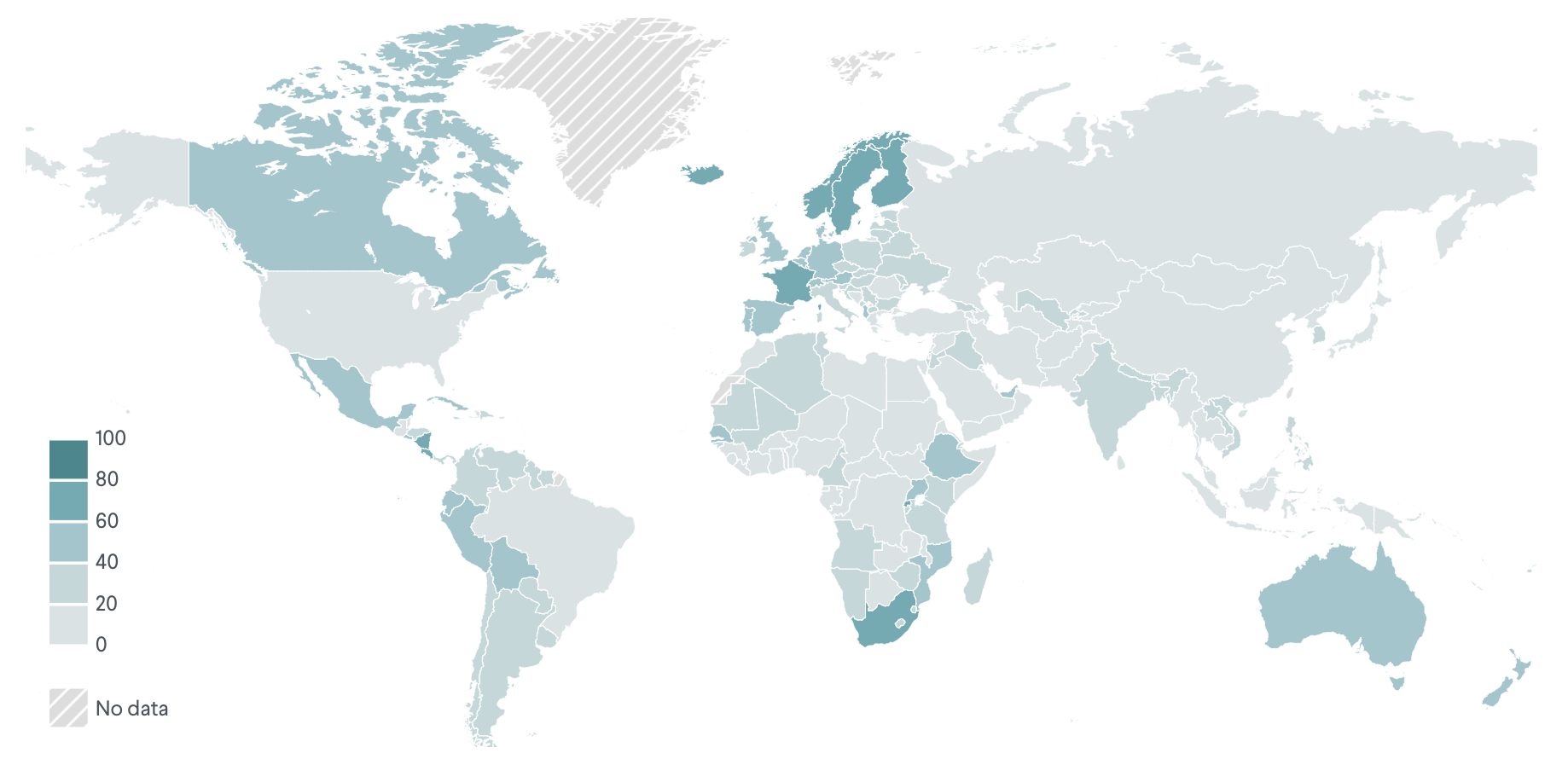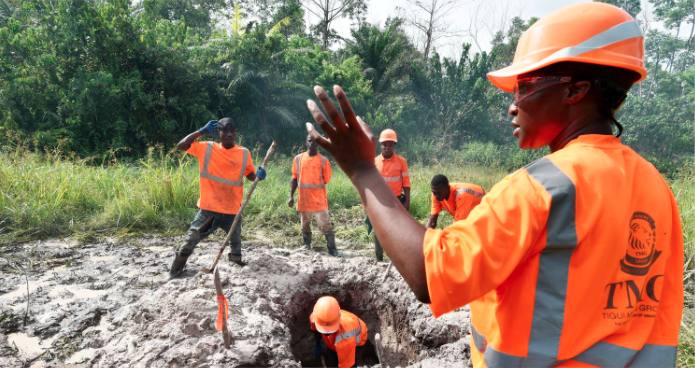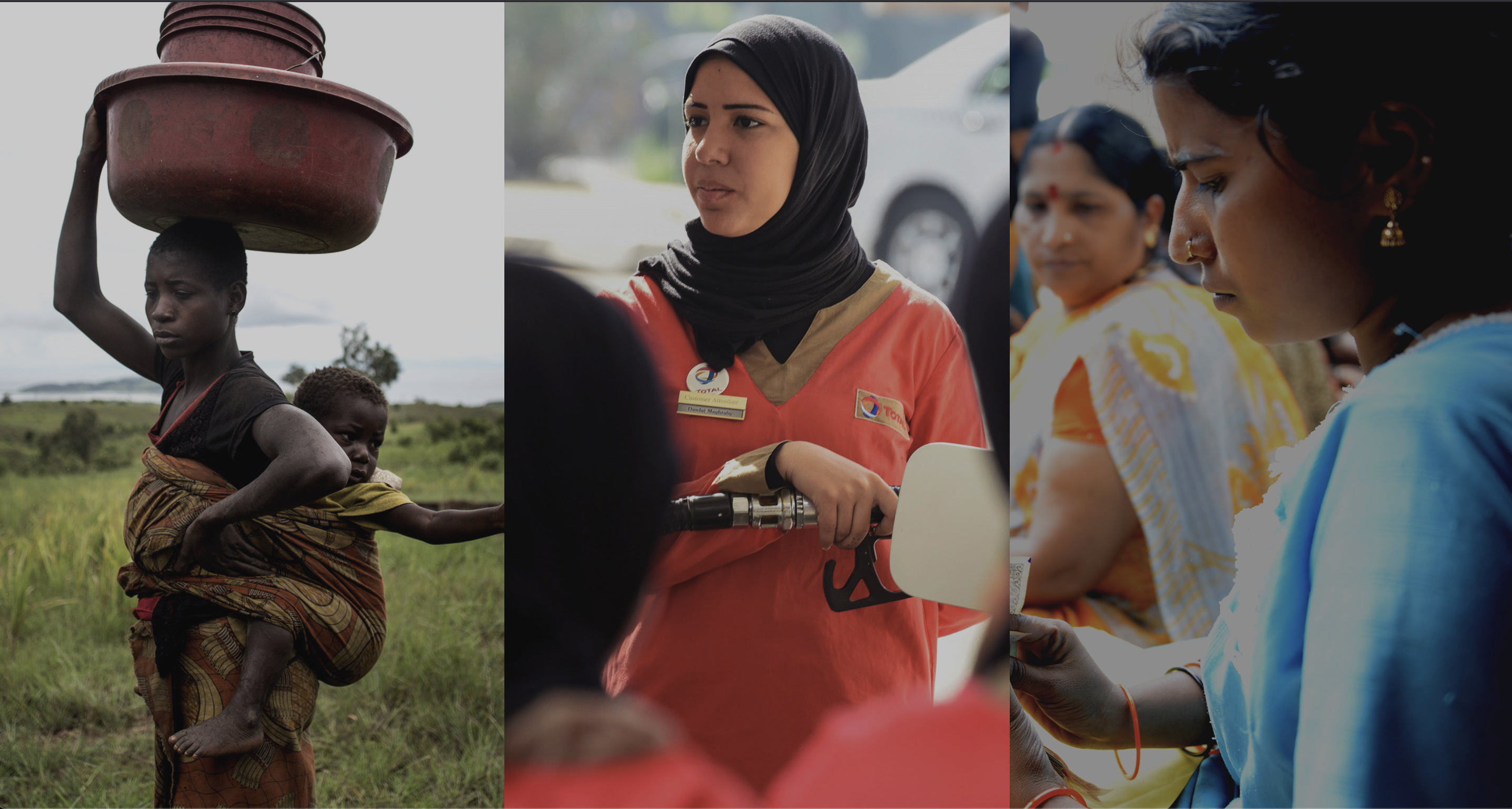In the 2018 peace process leading up to the Revitalized Agreement on the Resolution of the Conflict in the Republic of South Sudan, 33 percent of the delegates were women, female civil society leaders acted as official observers, and women made up 20 percent of the agreement’s signatories. South Sudanese women were similarly represented in the 2015 negotiations, as 30 percent of the negotiators and 20 percent of signatories of the final agreement; female civil society leaders also served as official observers.
Women in civil society have worked across lines, broadened the negotiating agenda, staged mass action to advance security, and pressured all parties to implement the 2018 agreement.
In 2011, South Sudan became the newest country in the world, but it has been plagued by civil war since 2013, causing mass displacement, widespread food insecurity, high levels of violence, and human rights violations that could constitute war crimes. An estimated 400,000 people have been killed, over 1.5 million have been displaced internally, and an additional 2 million have fled across the border. The majority of displaced people are women and girls. In 2015, after seven failed cease-fires and under the threat of international sanctions, President Salva Kiir and rebel leader and former Vice President Riek Machar signed the Agreement on the Resolution of the Conflict in the Republic of South Sudan, which temporarily halted violence between the warring parties. Following the collapse of the agreement in late 2016, the Intergovernmental Authority on Development—an eight-country African trade bloc—established the High Level Revitalization Forum to reconvene negotiating parties. In September 2018, a revitalized agreement was signed in Juba, and in February 2019 Kiir and Machar announced the formation of a unity government, formally ending the six-year war.
For the 2015 peace process, initially 15 percent of negotiators were women. While women were at first absent from the government’s formal delegation, three women served as part of the opposition’s ten-person team (30 percent), including one woman who had fought on the front lines. After internal lobbying, three women later joined the government’s ten-person team, bringing women’s representation to 30 percent on both sides. The Women’s Bloc of South Sudan—a network comprising civil society leaders—also served as formal observers and signatories of the 2015 agreement and as members of the Joint Monitoring and Evaluation Commission, charged with tracking implementation of the agreement. In the 2018 peace talks, one woman served as a mediator, women made up 25 percent of official delegates, and members of the South Sudan Women’s Coalition—a new network of civil society leaders based in South Sudan and surrounding refugee camps—were official observers. Because of women’s advocacy, the warring parties included a much higher number of women in later rounds of talks than at the outset of the negotiations. At the final rounds of negotiations in 2018 in Addis Ababa, Ethiopia, women made up 33 percent of negotiators and later 20 percent of the agreement’s signatories. Throughout the peace process, women advocated for quotas to ensure they would have a seat at the table and across decision-making bodies and succeeded in adding a quota provision to the 2018 peace agreement that called for 35 percent representation of women in transitional executive institutions.
- Women
- Men
women
women
women
South Sudanese women have made a difference in the peace efforts through their official negotiating roles and their grassroots efforts.
Work across lines. Women have de-escalated tensions between South Sudan’s two main tribal groups: the Dinka and Nuer. While living in UN displacement sites, women successfully overcame tribal differences to reduce conflict between their communities. Following the adoption of the 2015 peace agreement, more than five hundred South Sudanese women joined across religious, ethnic, and regional divides to lay out their vision for the “South Sudan We Want,” identifying priorities and establishing the Women’s Peace think tank to monitor implementation of the agreement. They also insisted that all agreements be translated into local languages and worked together to educate the public on their contents and train them in conflict resolution. In 2018, women living in South Sudan and surrounding refugee camps formed the Women’s Coalition, with members serving as official observers to the renewed peace effort and relaying updates on the talks to the conflict-affected communities.
Broaden the agenda. Due to the influence of South Sudanese women leaders, the 2017 cease-fire agreement expressly prohibited sexual violence in conflict and included strong commitments to protect civilians and reunify women and children. Throughout the process, women also demanded accountability for atrocities committed by armed groups, security forces, and peacekeepers, including widespread sexual violence that has destabilized communities across the country. They further ensured that the 2018 revitalized agreement included provisions on gender-based violence and on quotas for women’s representation in transitional bodies.
Stage mass action. In 2017, hundreds of South Sudanese women marched in silence through Juba, South Sudan’s capital, to call for an end to the conflict. They protested the continued rape and killing of civilians, displacement, and lack of humanitarian services for people in need.
South Sudanese women’s groups and international observers continue to stress that women should participate meaningfully in all peace and security processes to ensure that civilians are protected from violence and the country moves forward on a path to stability.
“When we talk security as women, we’re talking human security. It’s not about the guns. . . . It’s about our life, food, education, and health.”
— Priscilla Joseph, founder and chairperson of the South Sudan Women’s Peace Network






